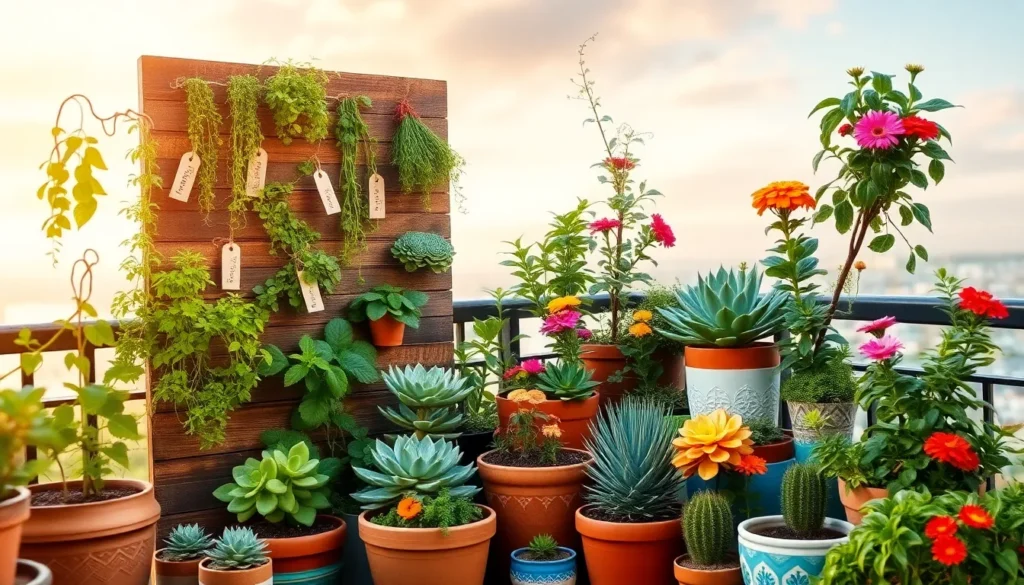Whether you’re just starting your gardening adventure or have already cultivated a green thumb, transforming a small balcony into a thriving garden oasis might be easier than you think. “10 Easy Small Balcony Gardening Tips” is your passport to a world where limited space becomes a canvas for vibrant, living art that not only beautifies your home but also nurtures your soul.
In this guide, you’ll discover practical strategies that make balcony gardening accessible and rewarding, regardless of your experience level. These tips are designed to empower you with the confidence and know-how to create a lush, productive garden that suits your lifestyle and space constraints.
With each tip, you’ll unlock the joy of watching your plants flourish, turning even the tiniest balcony into a sanctuary of color and life. Get ready to reap the rewards of your efforts, as you find peace, satisfaction, and maybe even a few delicious harvests right outside your door!
Choose Compact Plant Varieties
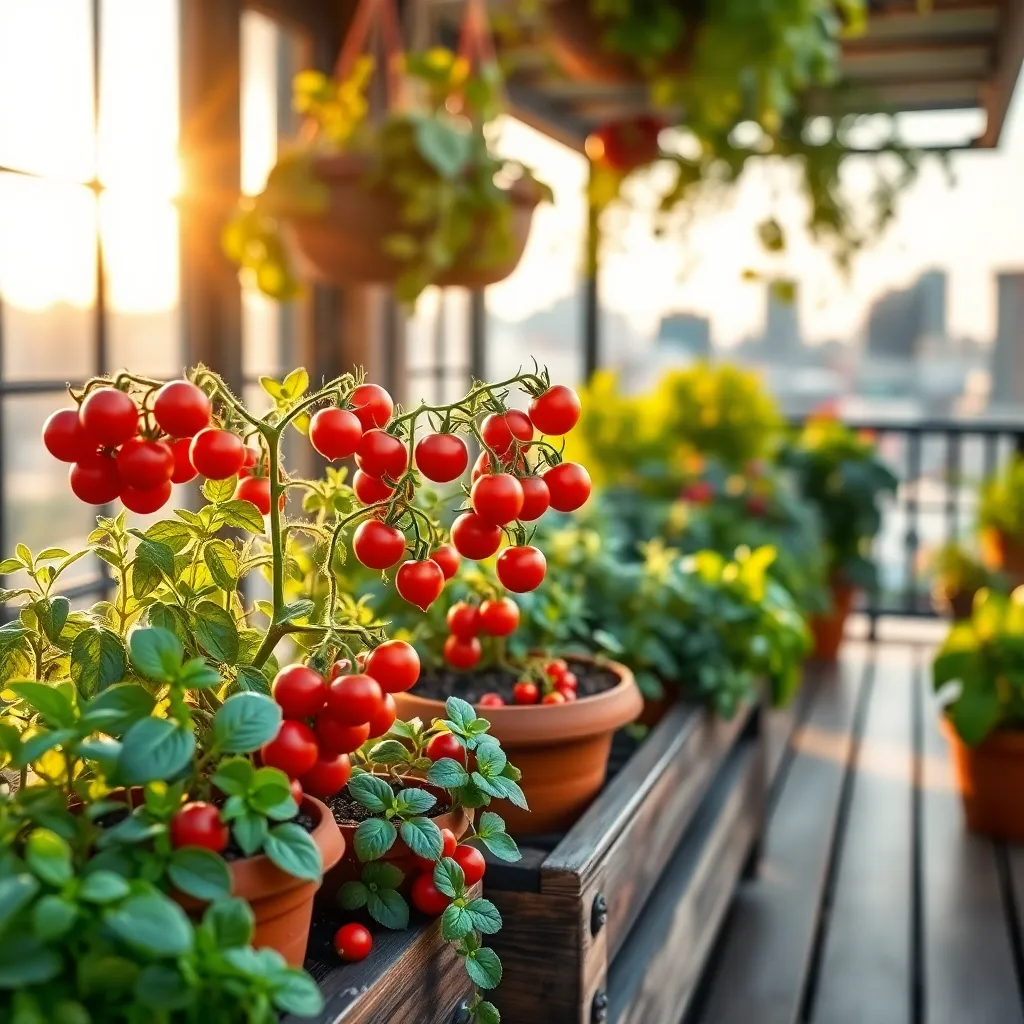
When space is limited, choosing compact plant varieties is a smart way to maximize your small balcony garden. Look for plants that are specifically bred for smaller spaces, such as dwarf or bush varieties, which thrive in containers and provide abundant yields.
Consider compact vegetables like bush beans, cherry tomatoes, or baby bell peppers, which are ideal for pots and require minimal space. These plants not only save space but are also relatively easy to care for, needing only well-draining potting soil and regular watering to flourish.
For those interested in flowers, opt for dwarf marigolds or miniature roses, which offer vibrant blooms without overwhelming your balcony. Place these flowering plants in containers with good drainage and ensure they receive at least six hours of sunlight daily for optimal growth.
Advanced gardeners can experiment with vertical gardening techniques by using trellises or hanging pots for vining plants like cucumbers or peas. This approach not only saves floor space but also adds an attractive vertical element to your balcony garden, encouraging lush growth with proper support and care.
Utilize Vertical Space Effectively
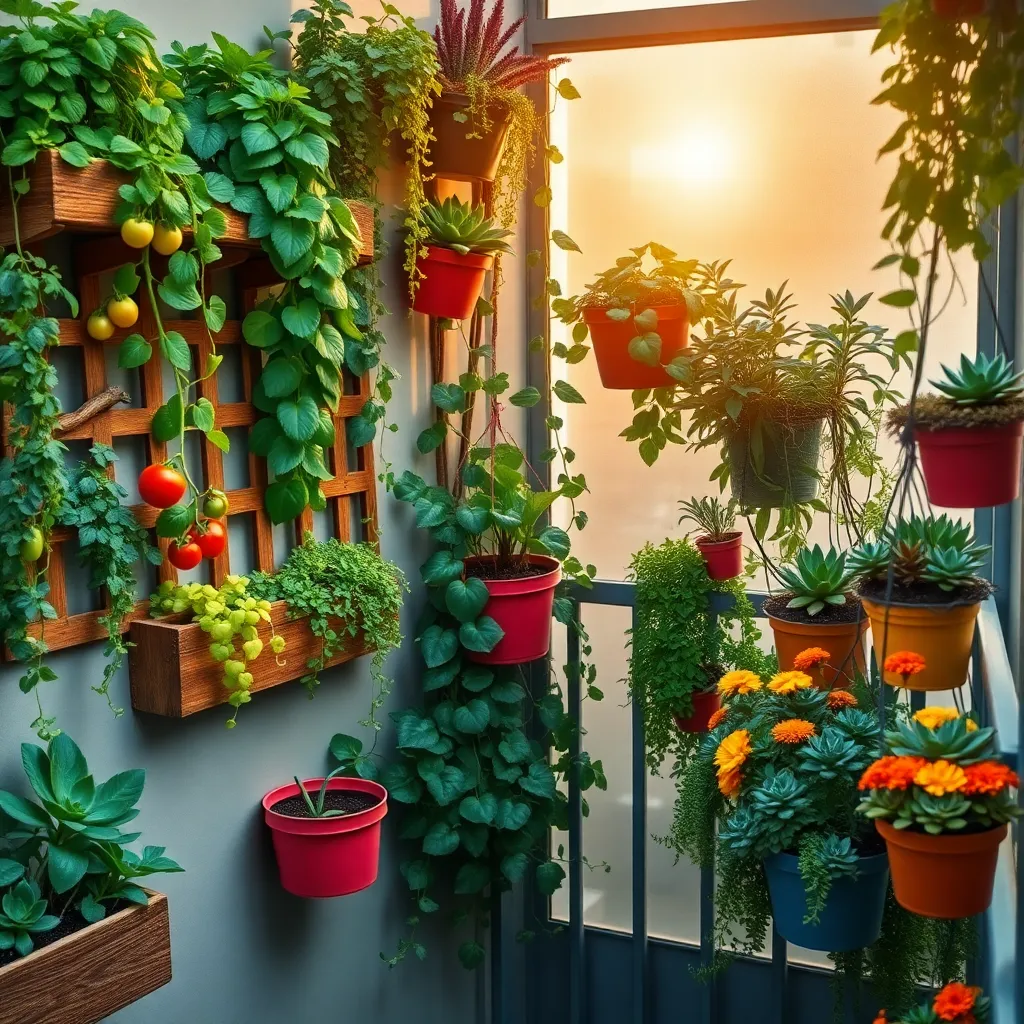
To make the most of a small balcony, consider using vertical gardening techniques. Install wall planters or hanging pots to utilize vertical space effectively, making room for more plants without sacrificing floor area.
Vertical gardens are not only space-efficient but can also add visual interest to your balcony. Opt for climbing plants like sweet peas or morning glories that naturally grow upwards and can be trained to cover trellises or railings.
For those new to gardening, start with easy-to-care-for vertical plants such as ferns or pothos, which thrive in shaded environments. Ensure these plants have well-draining soil and keep the soil consistently moist but not waterlogged.
Experienced gardeners might consider growing vegetables vertically, like pole beans or cucumbers, which require sturdy support structures. Use a high-quality potting mix and fertilize every few weeks to ensure healthy growth and bountiful yields.
Invest in Lightweight Containers
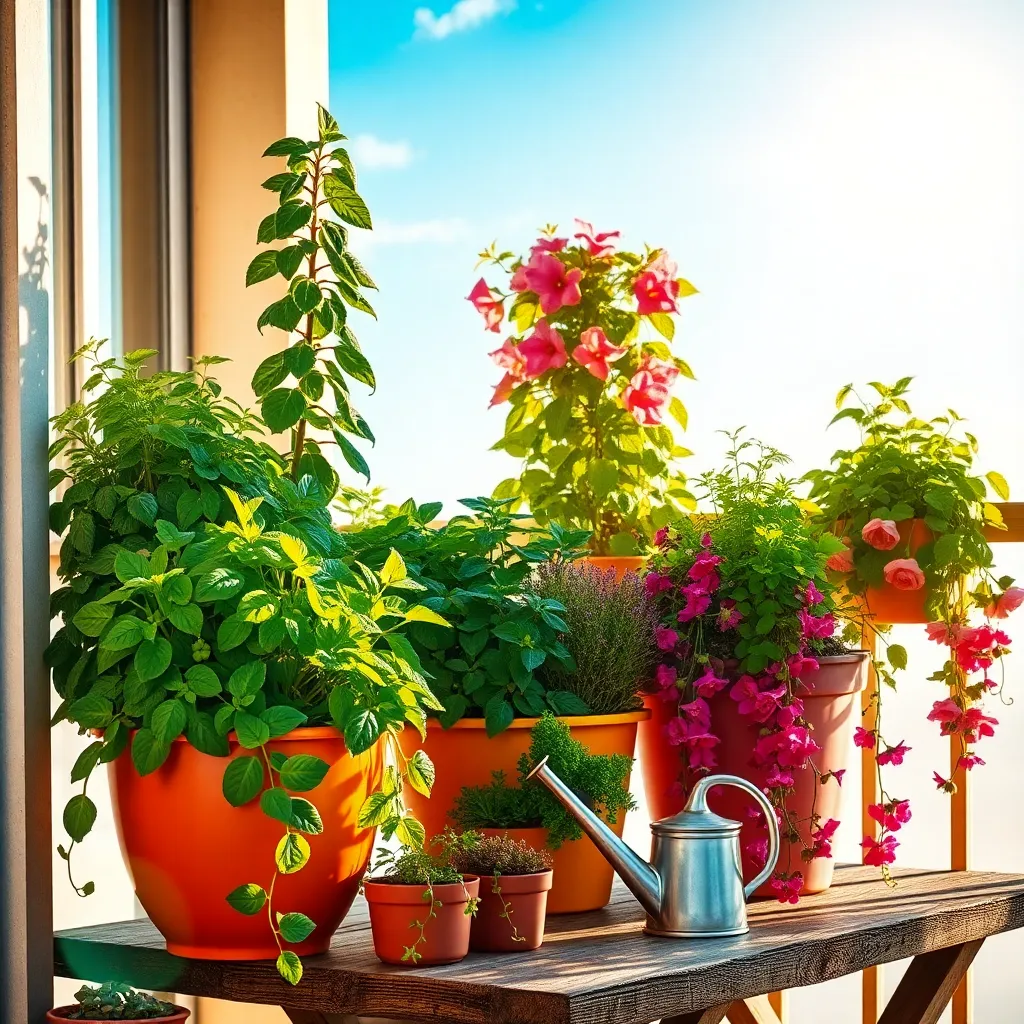
For balcony gardens, choosing the right containers is crucial to ensuring the health and growth of your plants. Investing in lightweight containers can make your gardening experience more enjoyable and manageable, especially in small spaces.
Lightweight containers, such as those made from plastic, fiberglass, or resin, are easy to move, allowing you to rearrange your plants as needed to maximize sunlight. This flexibility is particularly useful for optimizing light exposure throughout the year, helping plants thrive even on cloudy days.
These containers also tend to have excellent durability, resisting the wear and tear that comes with outdoor exposure. Opt for containers with built-in drainage holes to prevent waterlogging, which is critical for maintaining healthy root systems.
When selecting lightweight containers, consider their size and depth to match the needs of the plants you intend to grow. For example, herbs like basil and parsley can thrive in smaller pots, while tomatoes and peppers will require larger, deeper containers to accommodate their root systems.
To enhance plant health, use a high-quality potting mix specifically designed for container gardening. This type of soil retains moisture without becoming too compacted, providing the perfect balance of air and water for your plants’ roots.
For those ready to take their gardening skills to the next level, consider incorporating a self-watering system within your lightweight containers. This feature can help regulate watering schedules, ensuring plants receive consistent moisture while reducing the risk of overwatering.
Maximize Sunlight with Reflectors
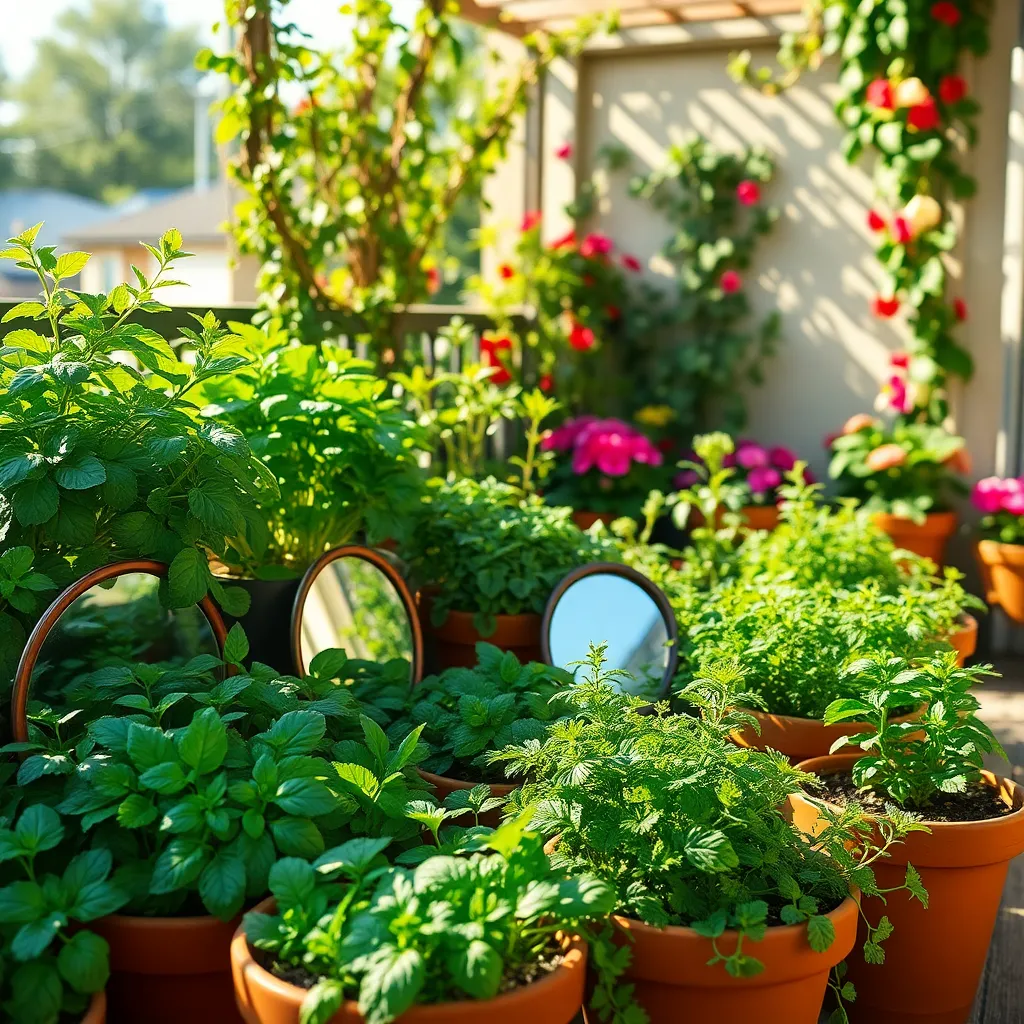
Enhancing sunlight exposure on a small balcony can significantly boost plant growth. One effective method is using reflectors to redirect sunlight onto shaded areas, maximizing light availability for all your plants.
Mirrors, aluminum foil, or even white-painted surfaces can serve as reflectors. Position these materials strategically to bounce sunlight onto plants, ensuring even those tucked in corners receive adequate light.
For a beginner-friendly approach, try using a simple piece of white cardboard as a reflector, propped up near your plants. This can be particularly useful during the shorter days of autumn and winter when natural light is limited.
Experienced gardeners might opt for more sophisticated reflectors like those used in photography, which can be adjusted to catch and direct light more precisely. Regularly rotate your plants for balanced growth, as this prevents one side from becoming overexposed while the other remains in shadow.
Opt for Multi-Purpose Furniture
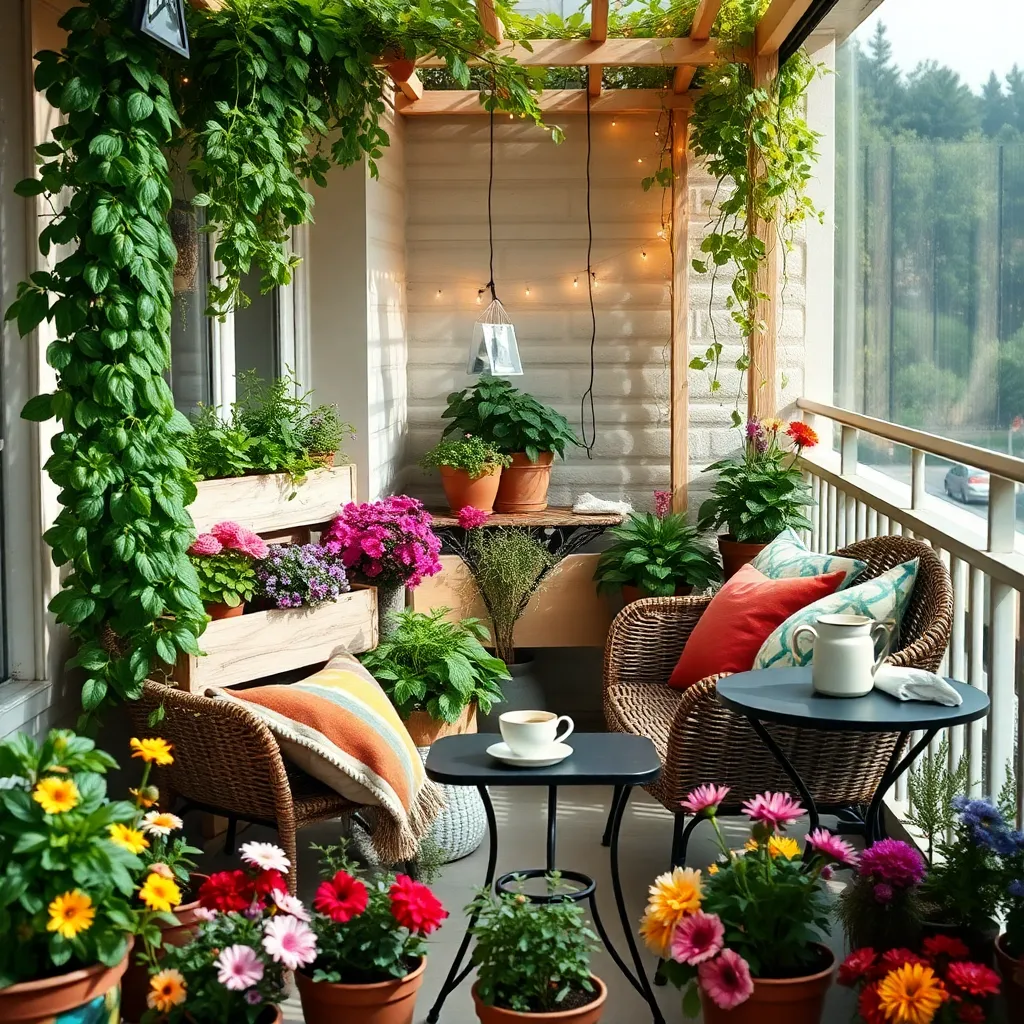
Balcony gardening can be enhanced significantly by choosing multi-purpose furniture that maximizes both space and function. Consider furniture pieces that double as planters or storage units, allowing you to keep gardening tools and supplies close at hand.
Opt for a bench with built-in planter boxes, which not only provides seating but also adds greenery to your space. This is an excellent way to grow small herbs like basil and mint, which thrive in well-draining soil and require regular watering.
Another great choice is a table with an integrated planter in the center, perfect for a small herb garden or decorative succulents. Succulents are particularly well-suited for balcony gardens as they require minimal watering and can tolerate full sun, making them low-maintenance yet striking additions.
Incorporating shelving units that attach to balcony railings can provide both storage and display space for potted plants. Use these shelves to grow trailing plants such as ivy or sweet potato vine, which can handle partial shade and benefit from consistent but moderate moisture levels.
Install a Simple Drip Irrigation
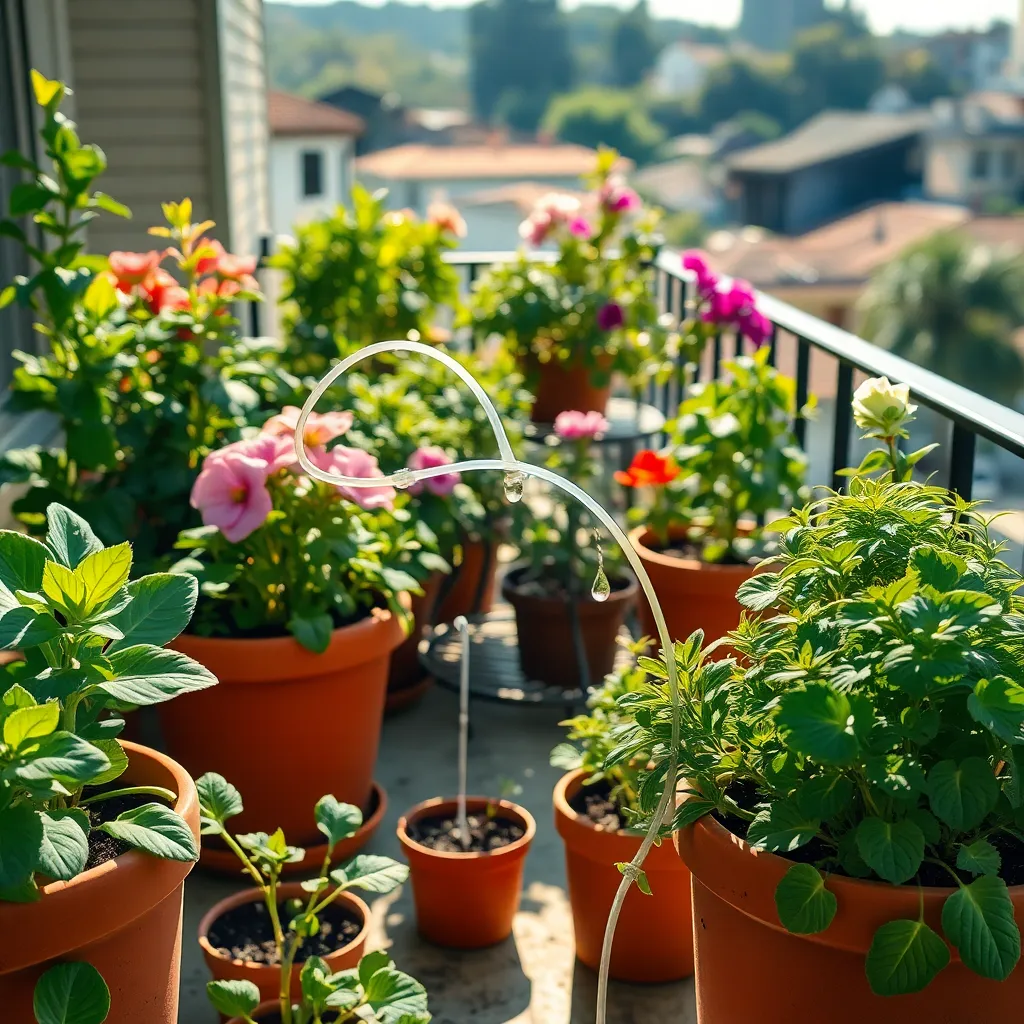
Transforming your balcony into a thriving garden can be simplified by installing a drip irrigation system. This method delivers water directly to your plants’ roots, ensuring efficient use of water while keeping the foliage dry, which reduces the risk of diseases.
Begin by measuring your balcony space and determining where your plants are located. This will help you decide the length of tubing required and the number of emitters needed to adequately water each plant.
To set up the system, you’ll need a few basic components: a mainline tubing, emitters, connectors, and a pressure regulator. These components are often available in drip irrigation kits at garden centers, making it easy for beginners to get started.
Attach the mainline tubing to your water source, securing it with a pressure regulator to prevent over-watering. From there, use connectors to branch smaller lines to each plant pot, placing emitters close to the base of each plant.
For optimal results, set your system to run in the early morning or late afternoon. This timing helps minimize water evaporation and ensures your plants receive the moisture they need during cooler parts of the day.
Create a Mini Herb Garden
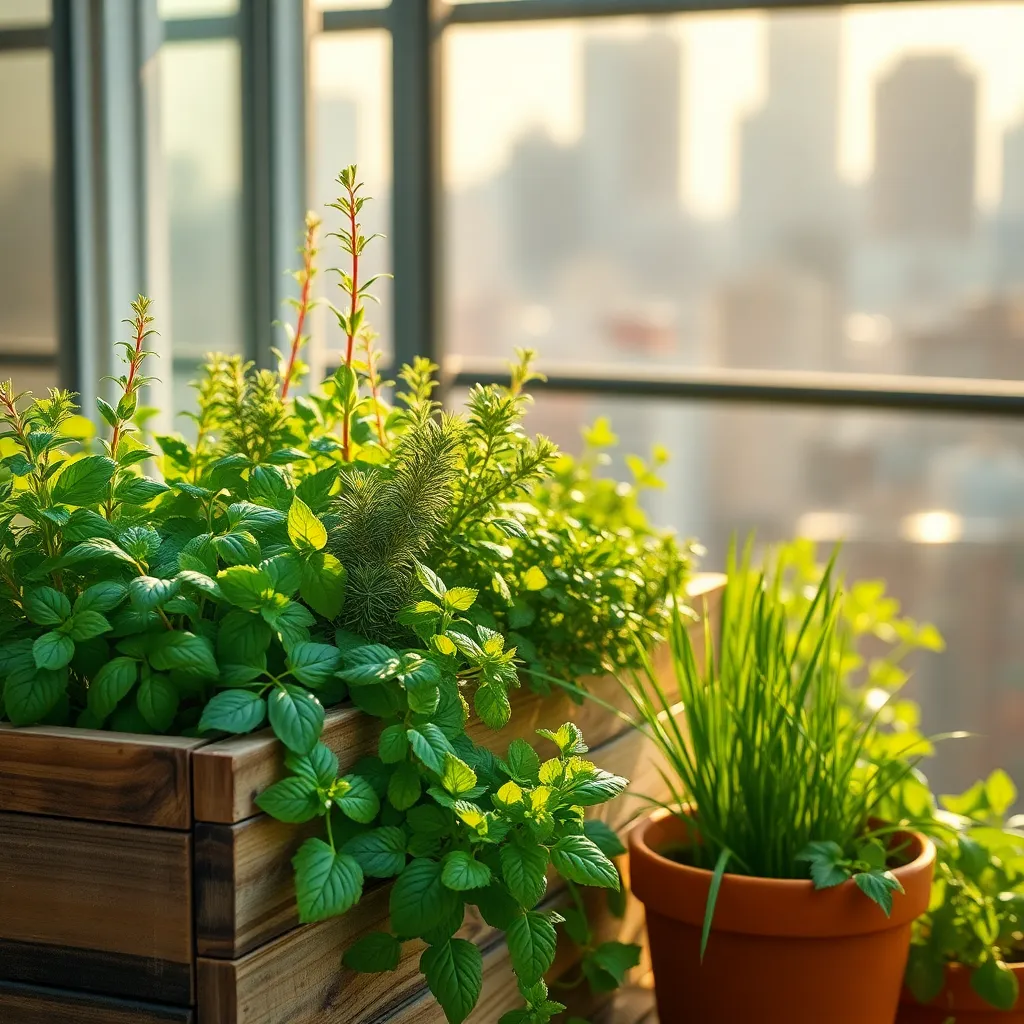
Creating a mini herb garden on your balcony is a delightful way to start gardening, even in small spaces. Begin by selecting a variety of herbs such as basil, mint, and parsley, which are well-suited for container gardening and commonly used in cooking.
Choose pots with good drainage to prevent waterlogged soil, which can harm your plants. Opt for containers that are at least 6-8 inches deep to give the herb roots ample room to grow.
Herbs thrive in well-draining soil, so use a quality potting mix enriched with perlite or vermiculite. This will help maintain the right balance of moisture and aeration, crucial for healthy growth.
Place your herb pots in a spot that receives at least 6 hours of sunlight each day, as most herbs require plenty of light to thrive. If your balcony is shaded, consider herbs like mint or parsley, which can tolerate less sunlight.
Water your herbs regularly, keeping the soil consistently moist but not soggy. A simple way to check is to stick your finger about an inch into the soil; if it feels dry, it’s time to water.
Finally, harvest your herbs frequently to encourage new growth and prevent them from flowering prematurely. Regular pruning also keeps the plants compact and robust, making them a perfect fit for your small balcony garden.
Use Hanging Planters for Vines
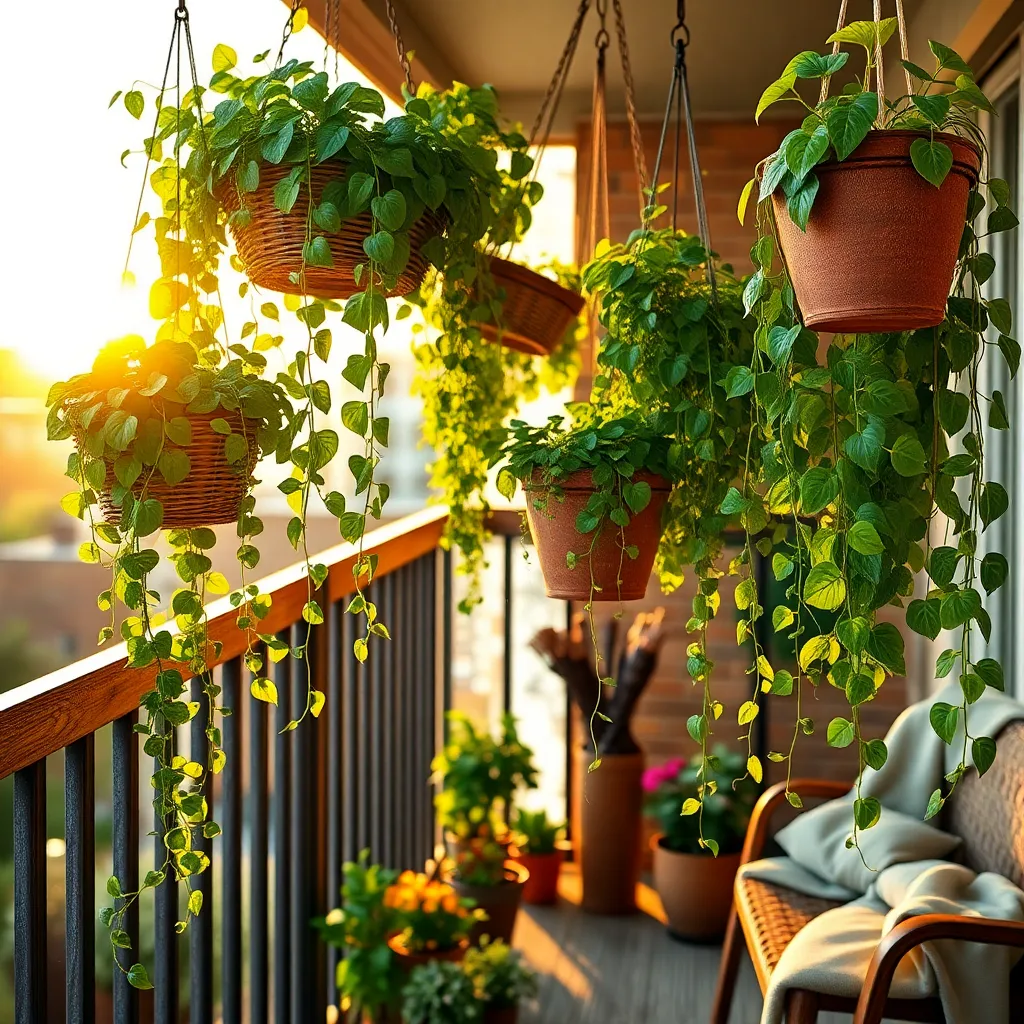
Hanging planters are a fantastic way to maximize vertical space on a small balcony while adding visual interest with trailing vines. These planters allow you to grow plants like ivy, pothos, or even flowering vines such as morning glories, which can create a lush, green curtain with minimal space.
Begin with selecting the right hanging planter that has adequate drainage to prevent root rot. Choose a lightweight planter made from materials like plastic or fiberglass to avoid putting too much weight on your balcony railing or ceiling hook.
When planting vines in hanging planters, use a well-draining potting mix to ensure the roots have enough aeration. Water the plants when the top inch of soil feels dry, being careful not to overwater, as excess moisture can lead to fungal problems.
For those looking to take their vine care to the next level, consider adding slow-release fertilizer to the soil to provide consistent nutrients. Regularly prune your vines to encourage bushier growth and to prevent them from becoming too leggy.
Incorporate Smart Gardening Tools
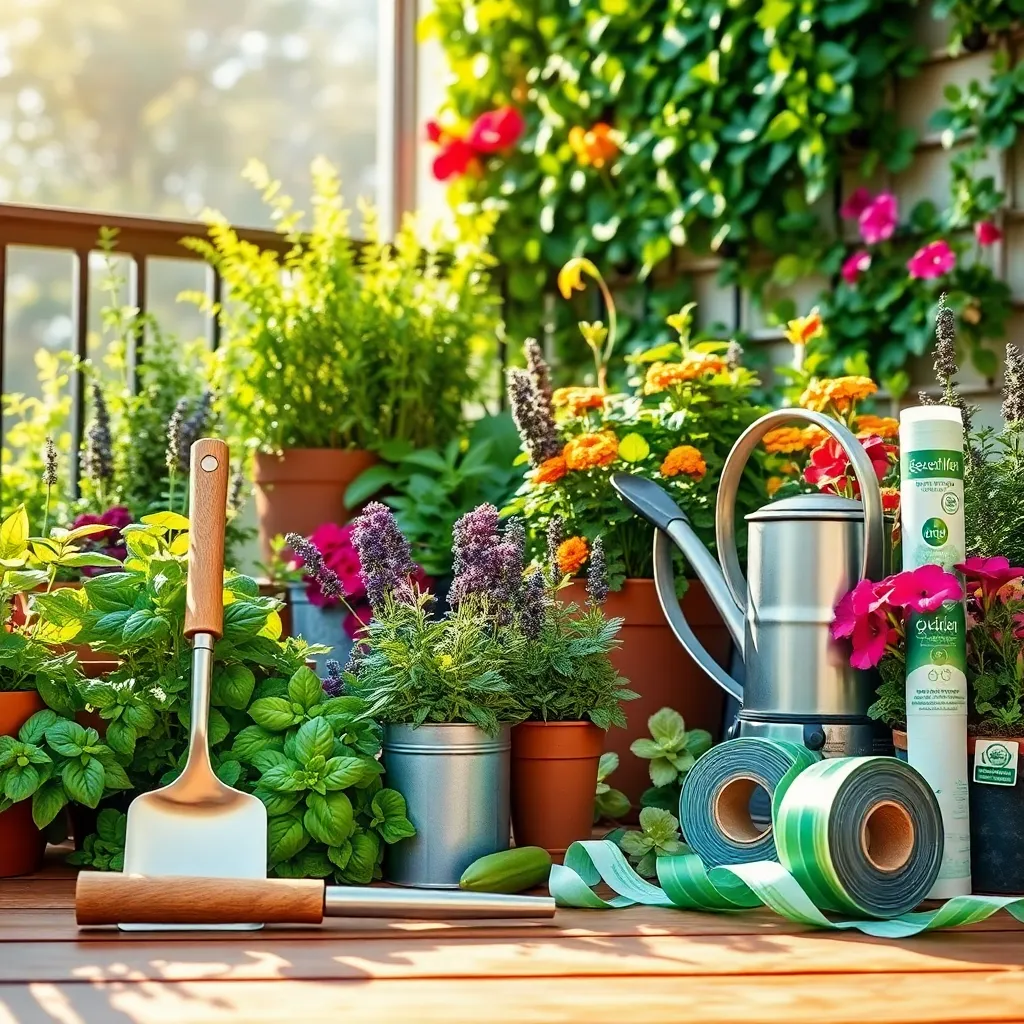
Transform your balcony into a tech-savvy garden by incorporating smart gardening tools. These tools can help you maintain optimal growing conditions with minimal effort, making them ideal for both beginners and experienced gardeners.
Consider using a smart irrigation system to automate watering. This ensures your plants receive the right amount of water without over- or under-watering, saving you time and helping your plants thrive.
For those looking to monitor plant health, a smart soil sensor can be invaluable. These sensors provide real-time data on soil moisture, temperature, and nutrient levels, allowing you to make informed decisions about plant care.
Lastly, integrate a smart plant light if your balcony lacks natural sunlight. These lights can simulate sunlight, providing your plants with the necessary light for photosynthesis and promoting healthy growth.
Rotate Plants for Even Growth
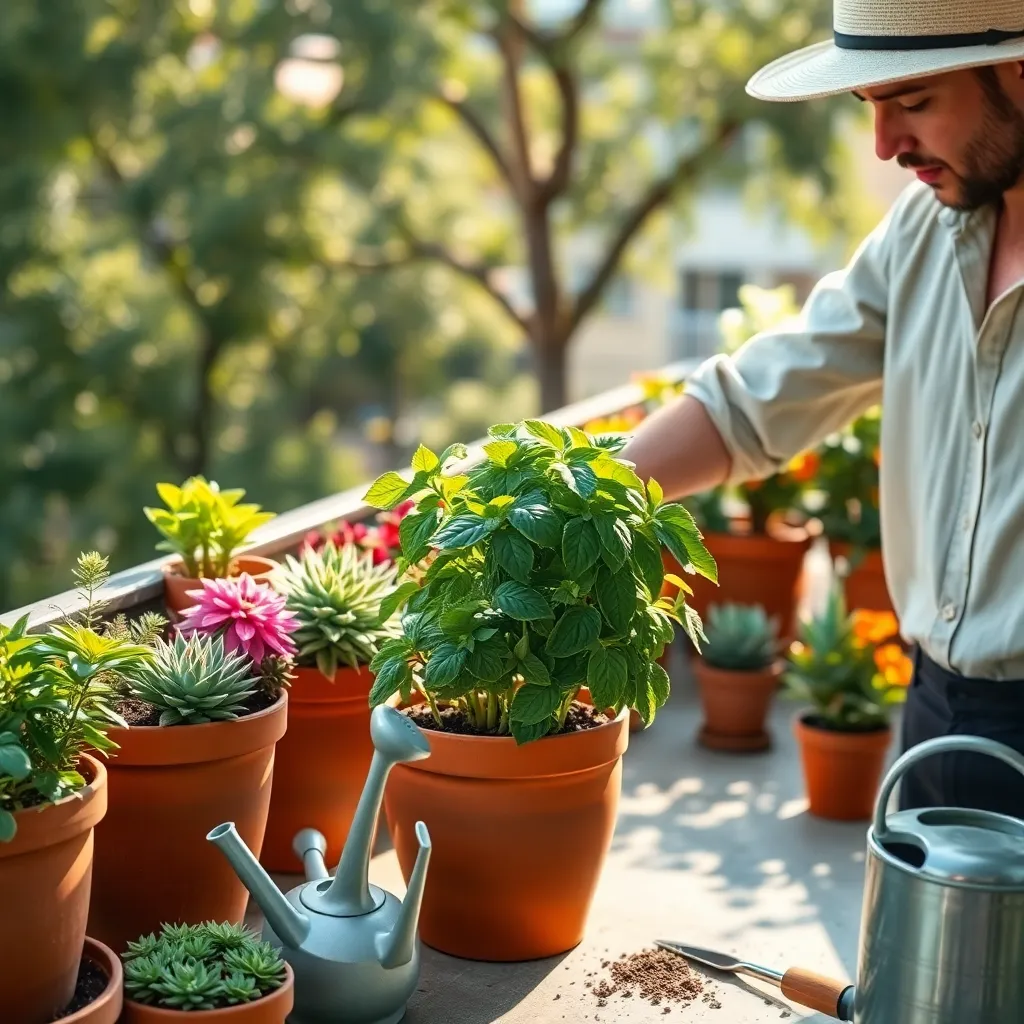
Ensuring even growth in your balcony garden can be achieved by regularly rotating your plants. This simple practice allows each side of the plant to receive equal sunlight, which is essential for balanced development.
Begin by observing how sunlight moves across your balcony throughout the day. Rotate your plants every week or two to expose different sides to the sun, preventing one-sided growth.
For beginners, mark a reminder on your calendar to rotate your plants regularly. Advanced gardeners might consider using a lazy Susan or a turntable to effortlessly spin potted plants, ensuring they all get their fair share of light.
Plants like tomatoes and herbs greatly benefit from this practice, as it helps them develop a uniform shape and size. Consistent rotation also reduces the risk of pests and diseases, which often thrive in shaded, moist areas of a plant.
Conclusion: Growing Success with These Plants
In exploring the ’10 Easy Small Balcony Gardening Tips,’ we’ve uncovered relationship insights that parallel the nurturing process of a thriving garden. Just as selecting the right plants is crucial, understanding your partner’s love language enriches your connection. Creating a harmonious layout mirrors balancing personal space and togetherness. Adequate sunlight symbolizes the importance of communication, while regular watering and fertilizing remind us of the ongoing effort relationships require. Pruning, much like resolving conflicts, ensures growth. Embracing seasonal changes teaches adaptability, and vertical gardening represents finding creative solutions together. Companion planting encourages supportive relationships, while pest control highlights the need to protect your bond from external stressors. Lastly, harvesting the fruits of your labor underscores the joy of shared achievements.
As your next step, choose one tip to implement today—perhaps a heartfelt conversation or a spontaneous date. This small action can set the stage for deeper connection. Bookmark this article as your go-to guide for nurturing a relationship that flourishes over time. With consistent care and attention, your relationship can bloom into a source of lasting joy and fulfillment. Remember, every small step you take today lays the foundation for a successful and loving future together. Save this article to revisit these insights and continue your journey towards a thriving partnership.

